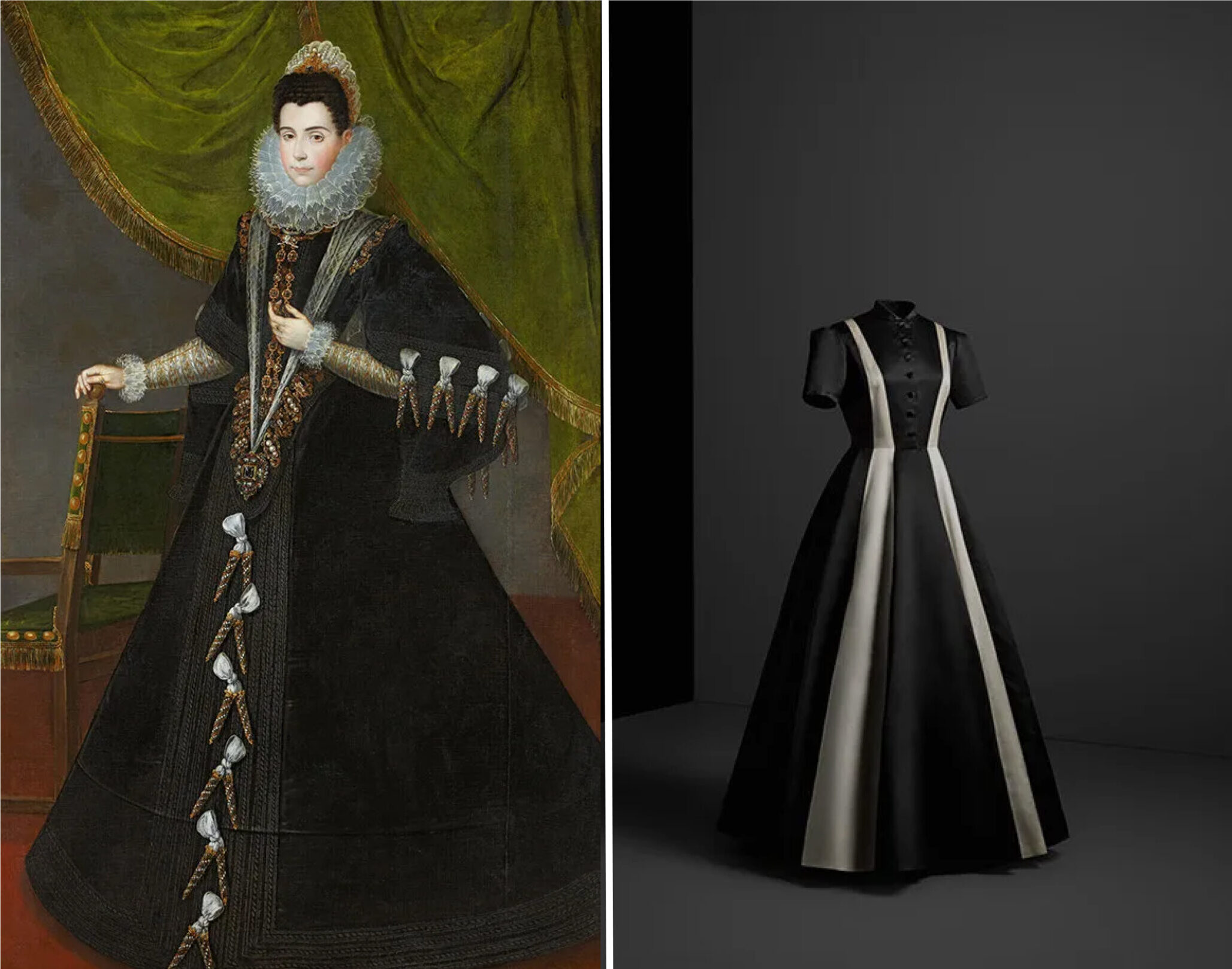Thierry Mugler’s Art of Fashion: Avant-Garde and Iconic
Thierry Mugler’s art redefined the boundaries of fashion, blending creativity, drama, and innovation. His bold silhouettes and futuristic...
Errika Gerakiti 30 December 2024
Cristóbal Balenciaga was “the master of us all,” as Christian Dior said, and “the only couturier in the truest sense of the word,” according to Coco Chanel. He was an enigmatic figure who preferred to stay away from the spotlight. Balenciaga redefined the concept of haute couture and made everyone delirious with his innovative designs.
Cristóbal Balenciaga (1895–1972) was a special figure in the fashion world. He designed his first gown at the age of 12. He soon excelled as a couturier for the royalty and aristocracy of Spain. However, there was no reference to Spanish art at this early stage. After the beginning of the Spanish Civil War (1936–1939) and General Franco’s dictatorship, Balenciaga moved to Paris. It was then that he expressed a nostalgia for his mother country. He thus started incorporating references from Spanish art into his designs. Let’s take a look at some of Balenciaga’s artistic inspirations.
Leaving aside the debate about El Greco’s nationality, he was one of Balenciaga’s major inspirations. One of the things that El Greco is known for is his use of vivid colors. The vibrant colors penetrated Balenciaga’s mind and imagination. For example, he took the vibrant yellow of the archangel Gabriel from The Annunciation and created a beautiful mustardy evening gown from silk organza.

Likewise, he created another beautiful evening dress from silk, in a bright pink inspired by another El Greco Annunciation painting.

Balenciaga was fascinated by Francisco de Goya’s ability to illustrate fabrics in full detail. Goya painted in such a manner that one could see the transparency of textiles such as lace, trimmings, and tulles. Balenciaga became obsessed with them and began to use them in his designs.


Another possible influence of Goya is Balenciaga’s inclination to separate a flowing shape with a strong line. An example of this is Goya’s portrait of the Duchess of Alba, whose dress is separated by a red belt tied around her waist. Balenciaga created a very similar one.

The works of Diego Velázquez also had a significant impact on Balenciaga. What caught his attention was the shape of Velázquez’s dresses. That is how he came up with the Infanta dress in 1939. He reinterpreted the shape known from the portraits of the Infanta, Margarita Teresa, by creating a narrower skirt and a less exaggerated shape.


Francisco de Zurbarán is known mainly as a religious painter. However, as the “first fashion stylist of art history,” according to curator Martínez de la Pera, he painted portraits with outfits that today could be on the catwalk. Balenciaga skipped the holiness and paid attention to the clothing. He really liked the voluminous skirts, and he recreated them in his versions.


Moreover, Balenciaga was fascinated by how Zurbaran painted his monks with lustrous ivory clothes. When Franco’s granddaughter, Carmen Martínez Bordiú, and Queen Fabiola of Belgium reached out to him for their wedding dresses, Balenciaga created true masterpieces.

Cristóbal Balenciaga was a very religious man. It is no surprise that he was enchanted when he came across the Spanish court paintings of the 16th and 17th centuries. The deep black of the women’s dresses, depicted in paintings of holiness, became one of Balenciaga’s distinguishing features. In the 1950s, he gave the austere dresses a twist, bestowing on them an unholy personality with feathers, sequins, and capes.




Another major part of Spanish culture that inspired Balenciaga is the flamenco dance. Balenciaga made several pieces similar to flamenco dresses, but he always added a personal touch to his designs. The dresses, created in the 1950s and 1960s, feature the typical flamenco skirt, which has ruffles and is either open or shorter at the front and closed or longer at the back. This motif can be found even in recent designs of the House of Balenciaga.




Bullfighting was also a part of Spanish tradition from which Balenciaga drew inspiration. His hats and certain boleros were designed in accordance with the tradition of the matadors. The difference is that the Balenciaga ones are fringed, tasseled, and have sequins. In addition, the bullfighting concept has been present on recent runways.




Beautiful and chic flowers from the Spanish still-life paintings bloomed in Balenciaga clothes. Balenciaga applied them on evening coats or embroidered them in evening gowns, using silk thread, sequins, and shiny beads.


DailyArt Magazine needs your support. Every contribution, however big or small, is very valuable for our future. Thanks to it, we will be able to sustain and grow the Magazine. Thank you for your help!